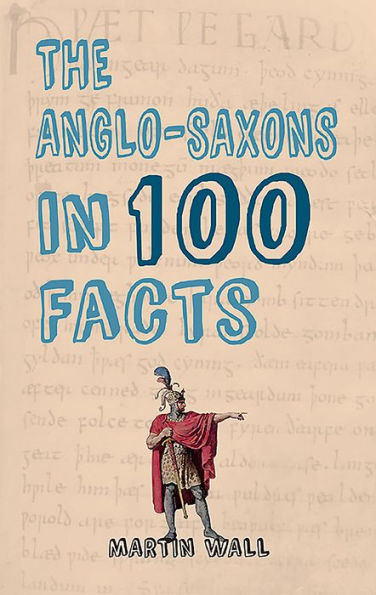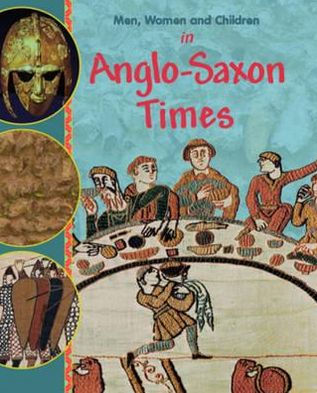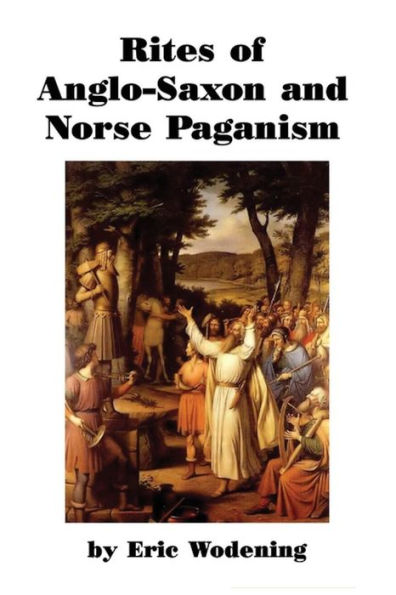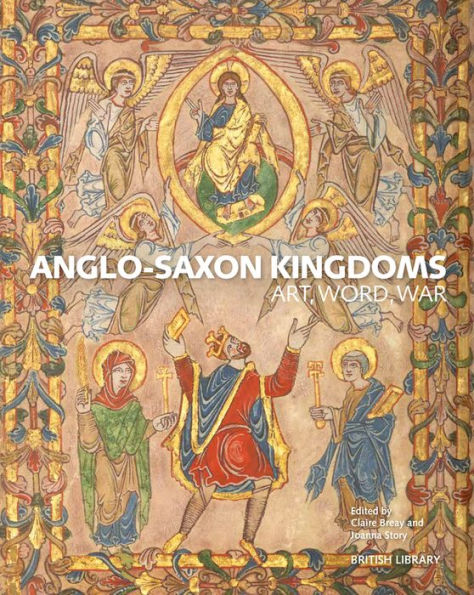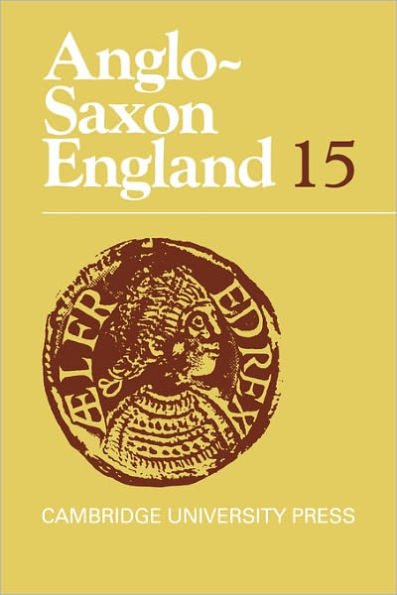Home
Anglo-Saxon Art
Barnes and Noble
Loading Inventory...
Anglo-Saxon Art in Franklin, TN
Current price: $36.00
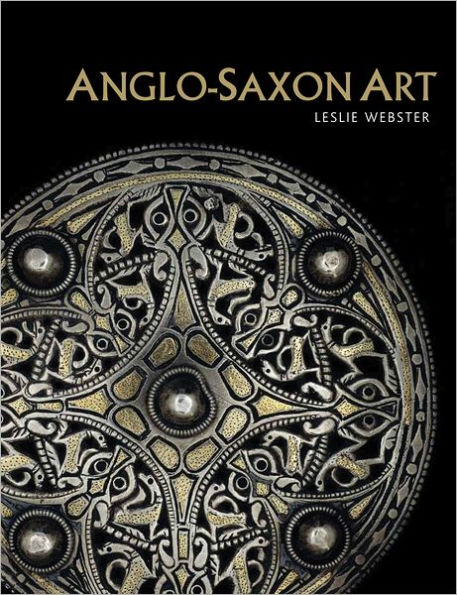
Barnes and Noble
Anglo-Saxon Art in Franklin, TN
Current price: $36.00
Loading Inventory...
Size: OS
This is the first new introduction to Anglo-Saxon art in twenty-five years and the first book to take account of the 2009 discovery of the Staffordshire Hoard—the largest cache of Anglo-Saxon gold and silver metalwork yet found.
Written by one of the leading scholars in the field and illustrated with many of the most impressive artifacts, it will be the authoritative book on the subject for years to come.
The Anglo-Saxon period in England, roughly A.D. 400–1100, was a time of extraordinary and profound cultural transformation, culminating in a dramatic shift from a barbarian society to a recognizably medieval civilization. Settled by northern European tribal groupings of pagan and illiterate warriors and farmers in the fifth century, England had by the eleventh century acquired all the trappings of medieval statehood—a developed urban network and complex economy, a carefully regulated coinage, flourishing centers of religion and learning, a vigorous literary tradition, and a remarkable and highly influential artistic heritage that had significant impact far beyond England itself. This book traces the changing nature of that art, the different roles it played in culture, and the various ways it both reflected and influenced the context in which it was created.
From its first manifestations in the metalwork and ceramics of the early settlers, Anglo-Saxon art displays certain inherent and highly distinctive stylistic and iconographic features. Despite the many new influences that were regularly absorbed and adapted by Anglo-Saxon artists and craftsmen, these characteristics continued to resonate through the centuries in the great manuscripts, ivories, metalwork, and sculpture of this inventive and creative culture.
Anglo-Saxon Art
—which features 150 color and black-and-white illustrations—is arranged thematically while following a broadly chronological sequence. An introduction highlights the character of Anglo-Saxon art, its leitmotifs, and its underlying continuities. Leslie Webster places this art firmly in its wider cultural and political context while also examining the significant conceptual relationship between the visual and literary art of the period.
Written by one of the leading scholars in the field and illustrated with many of the most impressive artifacts, it will be the authoritative book on the subject for years to come.
The Anglo-Saxon period in England, roughly A.D. 400–1100, was a time of extraordinary and profound cultural transformation, culminating in a dramatic shift from a barbarian society to a recognizably medieval civilization. Settled by northern European tribal groupings of pagan and illiterate warriors and farmers in the fifth century, England had by the eleventh century acquired all the trappings of medieval statehood—a developed urban network and complex economy, a carefully regulated coinage, flourishing centers of religion and learning, a vigorous literary tradition, and a remarkable and highly influential artistic heritage that had significant impact far beyond England itself. This book traces the changing nature of that art, the different roles it played in culture, and the various ways it both reflected and influenced the context in which it was created.
From its first manifestations in the metalwork and ceramics of the early settlers, Anglo-Saxon art displays certain inherent and highly distinctive stylistic and iconographic features. Despite the many new influences that were regularly absorbed and adapted by Anglo-Saxon artists and craftsmen, these characteristics continued to resonate through the centuries in the great manuscripts, ivories, metalwork, and sculpture of this inventive and creative culture.
Anglo-Saxon Art
—which features 150 color and black-and-white illustrations—is arranged thematically while following a broadly chronological sequence. An introduction highlights the character of Anglo-Saxon art, its leitmotifs, and its underlying continuities. Leslie Webster places this art firmly in its wider cultural and political context while also examining the significant conceptual relationship between the visual and literary art of the period.
This is the first new introduction to Anglo-Saxon art in twenty-five years and the first book to take account of the 2009 discovery of the Staffordshire Hoard—the largest cache of Anglo-Saxon gold and silver metalwork yet found.
Written by one of the leading scholars in the field and illustrated with many of the most impressive artifacts, it will be the authoritative book on the subject for years to come.
The Anglo-Saxon period in England, roughly A.D. 400–1100, was a time of extraordinary and profound cultural transformation, culminating in a dramatic shift from a barbarian society to a recognizably medieval civilization. Settled by northern European tribal groupings of pagan and illiterate warriors and farmers in the fifth century, England had by the eleventh century acquired all the trappings of medieval statehood—a developed urban network and complex economy, a carefully regulated coinage, flourishing centers of religion and learning, a vigorous literary tradition, and a remarkable and highly influential artistic heritage that had significant impact far beyond England itself. This book traces the changing nature of that art, the different roles it played in culture, and the various ways it both reflected and influenced the context in which it was created.
From its first manifestations in the metalwork and ceramics of the early settlers, Anglo-Saxon art displays certain inherent and highly distinctive stylistic and iconographic features. Despite the many new influences that were regularly absorbed and adapted by Anglo-Saxon artists and craftsmen, these characteristics continued to resonate through the centuries in the great manuscripts, ivories, metalwork, and sculpture of this inventive and creative culture.
Anglo-Saxon Art
—which features 150 color and black-and-white illustrations—is arranged thematically while following a broadly chronological sequence. An introduction highlights the character of Anglo-Saxon art, its leitmotifs, and its underlying continuities. Leslie Webster places this art firmly in its wider cultural and political context while also examining the significant conceptual relationship between the visual and literary art of the period.
Written by one of the leading scholars in the field and illustrated with many of the most impressive artifacts, it will be the authoritative book on the subject for years to come.
The Anglo-Saxon period in England, roughly A.D. 400–1100, was a time of extraordinary and profound cultural transformation, culminating in a dramatic shift from a barbarian society to a recognizably medieval civilization. Settled by northern European tribal groupings of pagan and illiterate warriors and farmers in the fifth century, England had by the eleventh century acquired all the trappings of medieval statehood—a developed urban network and complex economy, a carefully regulated coinage, flourishing centers of religion and learning, a vigorous literary tradition, and a remarkable and highly influential artistic heritage that had significant impact far beyond England itself. This book traces the changing nature of that art, the different roles it played in culture, and the various ways it both reflected and influenced the context in which it was created.
From its first manifestations in the metalwork and ceramics of the early settlers, Anglo-Saxon art displays certain inherent and highly distinctive stylistic and iconographic features. Despite the many new influences that were regularly absorbed and adapted by Anglo-Saxon artists and craftsmen, these characteristics continued to resonate through the centuries in the great manuscripts, ivories, metalwork, and sculpture of this inventive and creative culture.
Anglo-Saxon Art
—which features 150 color and black-and-white illustrations—is arranged thematically while following a broadly chronological sequence. An introduction highlights the character of Anglo-Saxon art, its leitmotifs, and its underlying continuities. Leslie Webster places this art firmly in its wider cultural and political context while also examining the significant conceptual relationship between the visual and literary art of the period.

